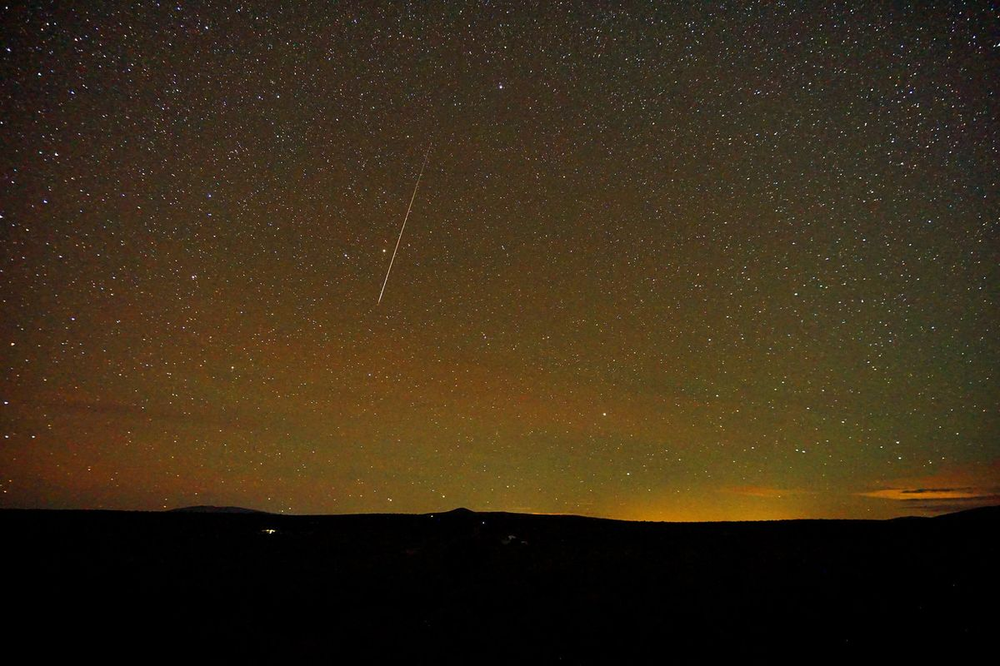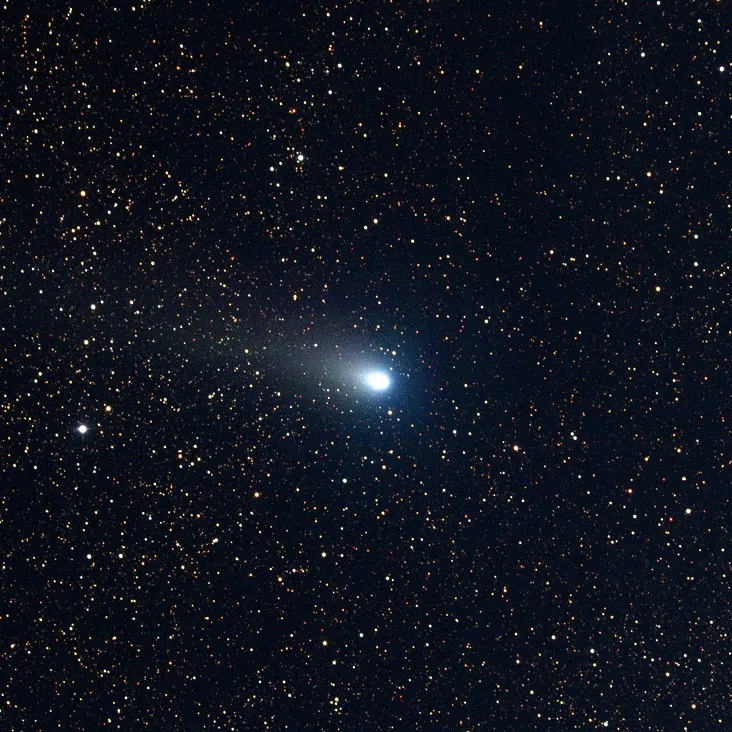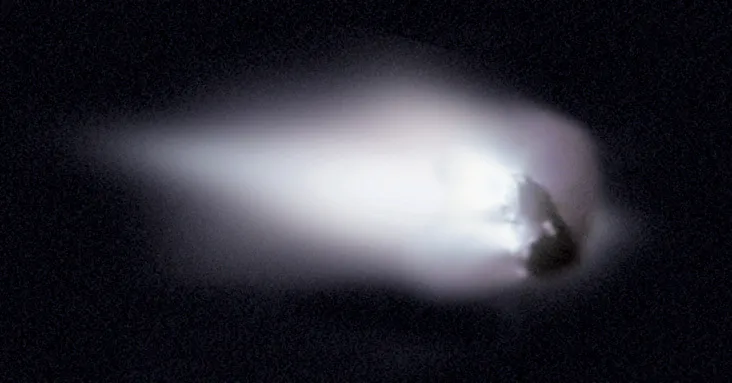Meteor showers and a partial eclipse: October is a busy month for NY stargazing
Oct. 7, 2023, 9:01 a.m.
Find out when two meteor showers and a partial solar eclipse will cross local skies.

An afternoon partial solar eclipse in the middle of the month and two meteor showers make October ideal for fall stargazing.
The Draconid meteor shower makes its appearance Oct. 6 through 10, peaking between Oct. 8 and 9.
The moon will blot out about a fifth of the sun during midday on Oct. 14, as part of the annular eclipse. Toward the end of the month, the Orionid meteor shower will peak after midnight on Oct. 21 and 22, and this astronomical lightshow will last until Thanksgiving.
“October is a busy month,” said Bart Fried, executive vice president of the Amateur Astronomers Association of New York.
The Draconids
October’s first meteor shower is the result of debris from the Comet 21P/Giacobini-Zinner on its 6.6 year orbit around the sun. The first recorded observation of the comet was by Michel Giacobini in 1900 from Nice Observatory in France. Its next appearance will be in 2025.
The comet’s dust of ice and debris makes a brief, but dazzling show with a peak rate of 10 meteors per hour on a good dark sky. New York City’s light pollution will make it difficult to see the fleeting light show. Astronomy buffs will have to find dark skies to catch a glimpse during the peak, beginning around 9 p.m. on Oct. 8 until the early hours of the next morning.

While there’s a chance to see a couple of these streaks of light from Floyd Bennett Field in Brooklyn, Fried recommends going as far north as the Catskills for the best views.
To find the Draconids, first locate the Little Dipper toward the northwest portion of the sky and find the end of its handle, the star Polaris. Close by, there are two stars: Eltanin and Rastaban, the bright eyes of the constellation Draco — the Dragon, not the Harry Potter character. The meteor shower’s namesake dragon will mark the area where the white streaks of the Draconids will converge, also known as the radiant point.
The annular solar eclipse
The annular eclipse is called a “Ring of Fire” because the moon doesn’t completely obstruct the solar disk. From Albuquerque, New Mexico, which is on the eclipse’s path, the moon will appear almost in the center of the sun, leaving a bright ring around it.
New Yorkers and New Jerseyans will only be able to see a partial eclipse, as the moon will begin to cover the right side of the sun on Oct. 14, starting at 12:09 p.m. in the tristate area.
At its maximum at 1:22 p.m., the sun will look like a cookie with a big bite in the bottom right side. The moon will then move into the bottom left side of the sun and slide out of view by 2:36 p.m.
To safely view the eclipse, never look directly at the sun without using proper eyewear. Solar eclipse glasses are available at scientific supply shops, but keep in mind that NASA does not approve any brand of solar viewers.

The American Academy of Ophthalmology provides a recommended list of brands and vendors, including specifications for safe viewers. The group advises against purchasing proper solar eyewear from Amazon due to counterfeits.
Binoculars, telescopes and cameras must be used with the proper filters. The proper filters are also included on the American Academy of Ophthalmology list.
The Solar Eclipse Activities for Libraries Library Network offers free eclipse glasses at the public library, check your local branch or the StarNet website.
If solar eclipse glasses are hard to come by, the Amateur Astronomers Association recommends a welders shield, which uses No. 14 glass. Another option is using an indirect viewing method such as making a pinhole projector. Instructions are available on NASA’s website.
The U.S. will next experience a full solar eclipse on April 8, 2024.
The Orionids
The second meteor shower of October is the Orionids, named for constellation Orion the Hunter, which you can use to locate the beams of light in the eastern part of the sky. The bright fiery balls are remnants of Halley’s Comet, which also generates a second meteor shower, Eta Aquariids, in early May.

The Orionids peak during the predawn hours of Oct. 21 and 22 and can create quite a show with as many as 20 fast-moving meteors per hour.
“The recommendation is get the heck out of town,” Fried said. “Do it by a lake where you have a real good, nice horizon, which is also pretty cool because sometimes if it's a calm night, you can see the meteors, not just in the sky, but in the reflection in the lake.”
NYC is sinking — but it's not because of large buildings